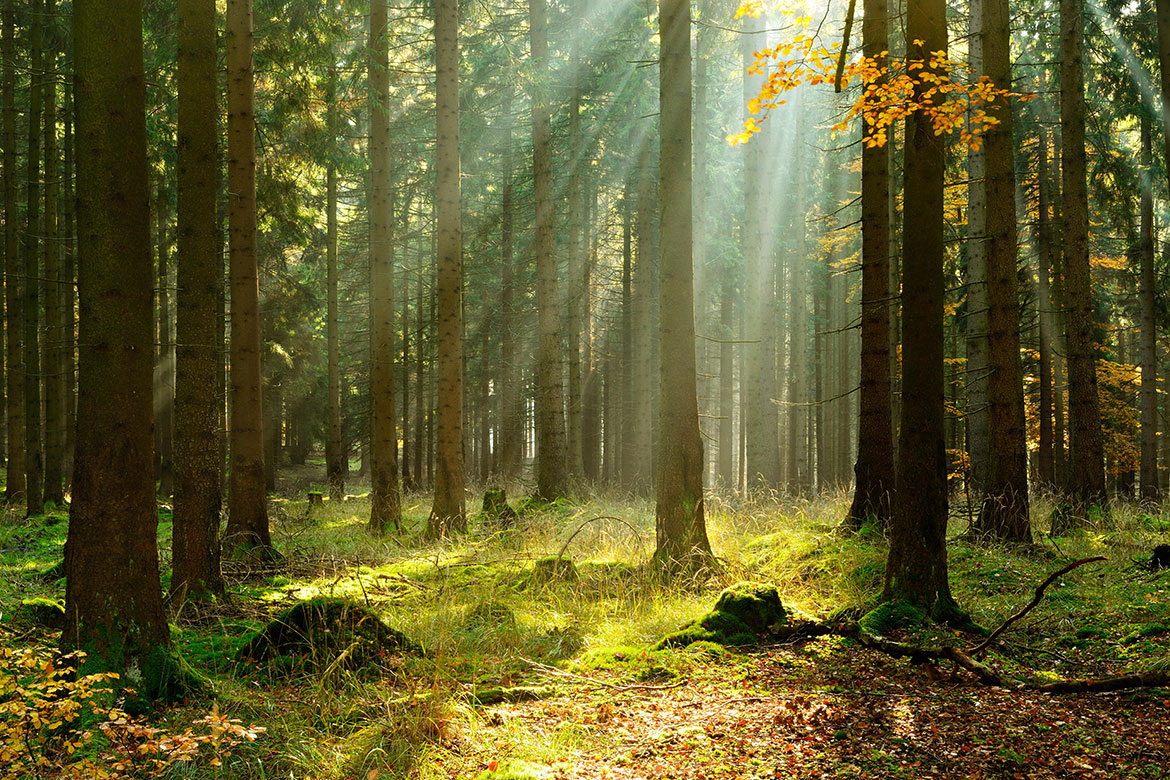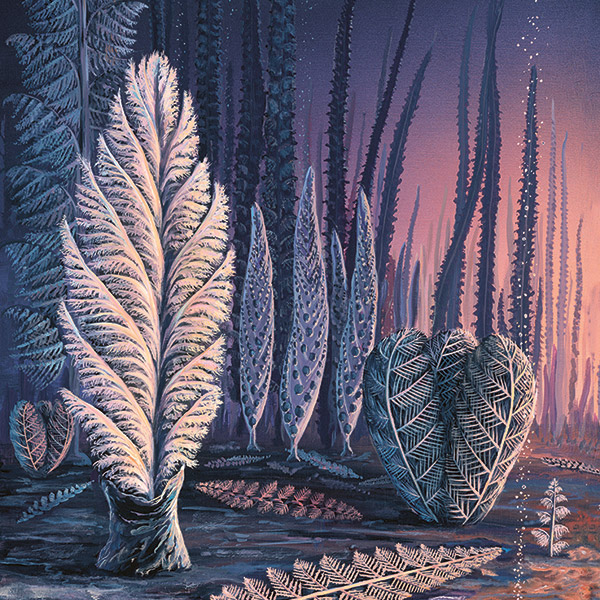FOREST RESEARCH
Whispering trees
Trees release a large variety of volatile substances that together form a kind of scent cloud. Its composition could reveal information about the wellbeing of a forest.

The forest air is full of scents. These molecules that humans find so pleasant in their nostrils are in fact battle cries of the plants in a war against their natural enemies. | Image: imageBROKER
We know that blossoms produce scents in order to attract pollinators such as bees and butterflies. But few know that even green leaves are constantly emitting chemical substances into the atmosphere.
“These substances are the language of the plants. They are how they communicate with each other and with other species”, says Ted Turlings, a professor of biology at the University of Neuchâtel. He is one of the scientists who have discovered that leaves emit these chemicals as a kind of alarm signal when they are being eaten by insects. They help to activate the plants’ own defence mechanisms, they recruit natural enemies of the insects, and they inform neighbouring plants.
Many research groups are investigating the function of these substances in individual species, but the ecologist Pengjuan Zu is taking things one step further. She wants to capture the scent clouds of whole forests and thereby try to understand the entire network of interactions between plants, pests and beneficial organisms: “Chemical profiles are like the fingerprints of plants, and they form a core communication channel with insects. If we listen very carefully to these chemical conversations, we might be able to obtain information about biodiversity and the well-being of the forest”.
Zu already analysed the scent of a tropical dry forest in Mexico when she was a postdoctoral researcher at the Massachusetts Institute of Technology (MIT) in the United States. To do this, she placed plastic cups over the leaves of various tree species, using an airtight seal. The cups contained small silicone threads that acted like a sponge, absorbing the volatile substances produced by the leaves. An analysis of the substances captured this way showed that the 23 species examined released a plethora of volatiles – many of which are produced by different tree species at the same time. A field survey found 28 harmful caterpillar species on the leaves, though they are specialists, with each of them only feeding on one or a few specific tree species.
A computer model showed a possible explanation for the redundancy of plant scent substances and these specialities among the caterpillars. According to Zu’s hypothesis, this is the result of an information arms race between plants and pests in the course of evolution. Plants confuse pests with ever new combinations of scents, whereupon the pests adapt by developing more accurate scent-detecting abilities – and then the game starts all over again.
Does each forest have its own scent mark?
Zu will soon be working as a group leader at ETH Zurich, where she would like to record, compare and make computer models of the chemical conversations between plants and insects in different forest types – in China, Mexico, Switzerland and elsewhere. In the Swiss Calanda massif for example, there is a well-established experimental field site, where small parcels of land have been dug out from different places and relocated to different altitudes. This will enable Zu to compare the substances released in plant communities under different climatic conditions.
She expects individual scent clouds to reveal more than just information about the biodiversity of a forest. She thinks it very likely that external influences such as drought stress, human forest management and pest infestation will also change the composition of the scent cloud. A scent analysis might thus allow for a quick, easy diagnosis of the state of a forest: “This is the ultimate goal of my research”.
Turlings regards these plans as extremely ambitious and difficult to realise, though he acknowledges that the latest analytical and mathematical models mean they are fundamentally viable: “It is undoubtedly the case that we could detect the ‘mood’ of a plant using just the scent it emits, and that the combination of substances and the relationships between them could enable us to read something about the state of the forest as a whole. Zu is onto something really interesting here. She wants to decode the language of the plants”.




